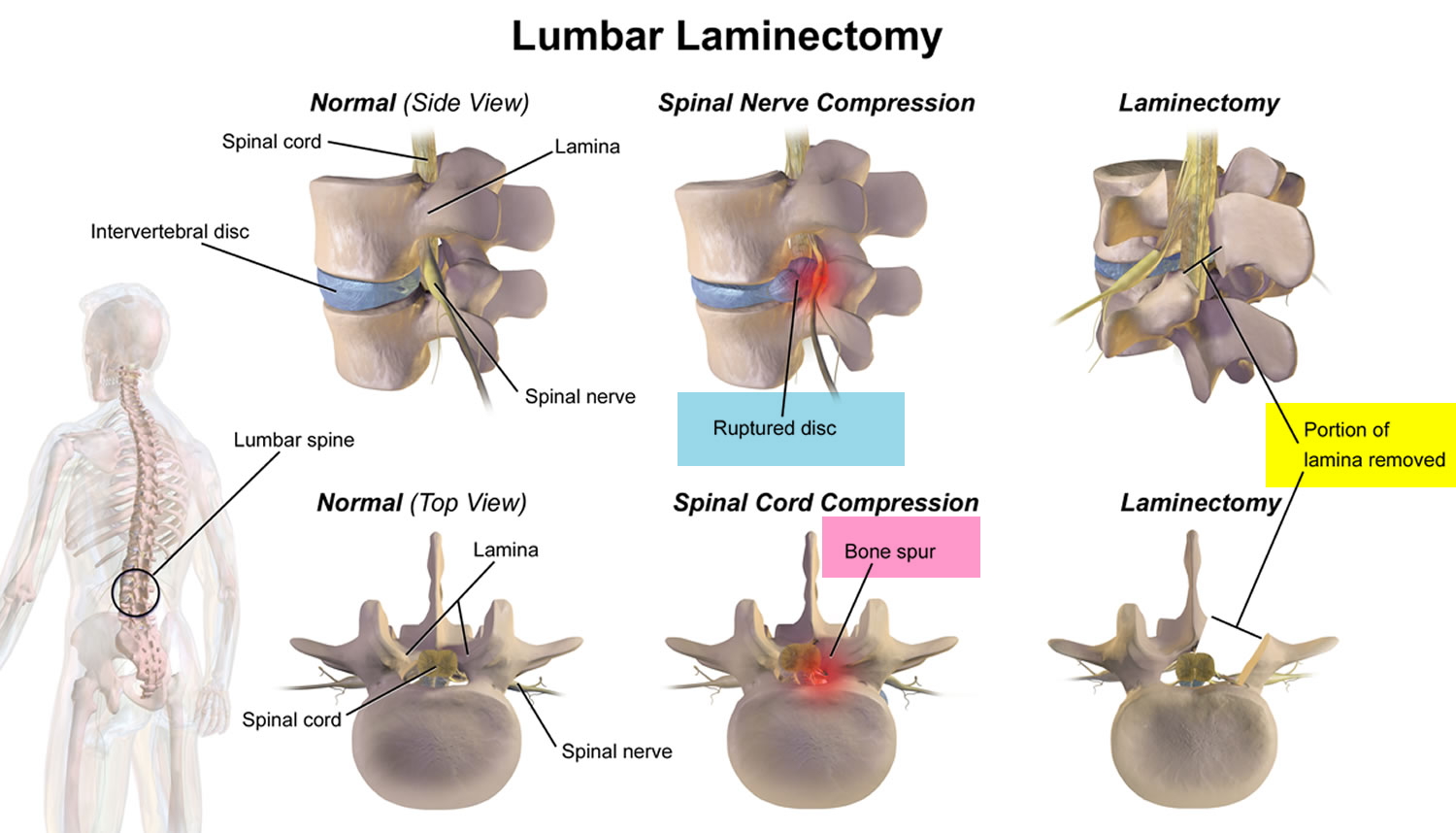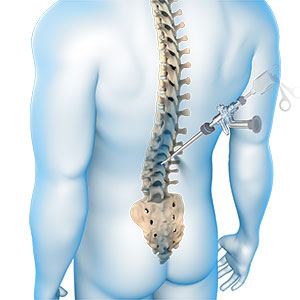Common type of spine surgery is a Laminectomy. A spine surgeon removes a small section of bone (called the Lamina) from the lower spine during the procedure. This procedure is most commonly used in the lower spine (Lumbar Laminectomy), but it may also be used in the neck (Cervical Laminectomy) or the middle of the back (Thoracic Laminectomy).
The lamina (also known as “bony arches”) are bone pieces that protrude from the back of the spine. Their removal during surgery relieves pressure on compressed nerves or the spinal cord, potentially improving quality of life and function.
lumbar laminectomy or decompression in Delhi
When a Laminectomy Surgery is required?
As per the Spine and Pain Specialist in Delhi the natural ageing process of the spine’s bones begins around the age of 30 and, in many cases, results in pain or nerve-related symptoms. When these symptoms impair function and quality of life, surgery is the best option. A laminectomy is sometimes performed as part of a larger surgery for other reasons.
Can a Laminectomy be used to treat Spinal Stenosis?
To treat Spinal Stenosis, your spine surgeon may recommend Laminectomy surgery. Stenosis is the progressive narrowing of the spinal canal (the tunnel created by the bones in your spine where the spinal cord passes through). The shrinking space crowds nerve roots and the spinal cord, causing severe pain or making certain movements difficult. Spinal stenosis occurs frequently as your body ages, as tissues in the spine gradually wear down over time.
Lower back stenosis (also known as Lumbar Spinal Stenosis) is a common cause of low back pain.
Lumbar Spinal Stenosis can result in:
Walking or bending over cause’s pain.
Numbness or tingling in the vicinity of your legs, groyne, or lower back.
Problems with the bladder or bowels (which is less common but can be serious).
What Is the Purpose of a Laminectomy?
According to Best Spine Specialist Doctor In delhi Laminectomy is frequently performed to alleviate the symptoms of spinal stenosis. The spinal column narrows and puts pressure on the spinal cord or nerves in this condition. Spinal stenosis can be caused by any of the following factors:
shrinking of the spine’s discs and swelling of the bones and ligaments, both of which occur with ageing arthritis of the spine, which is more common in older adults a congenital defect, or defect present at birth, such as abnormal spine growth
Paget’s disease of the bones, a condition in which bones grow abnormally
Achondroplasia, a type of dwarfism, is characterized by a spine tumor.
A severe injury
A slipped or herniated disc
Risks of Laminectomy
As per the Spine Specialist in Delhi the following are the risks of spine surgery:
A spinal nerve injury
Unsuccessful treatment, which can result in post-surgery pain
A recurrence of back pain, especially after spinal fusion
An infection at the surgical site or in the vertebrae
A leak of cerebrospinal fluid caused by a tear in the Dura mater, the membrane that surrounds the spinal cord
Preparation for a Laminectomy surgery
Inform your doctor if you:
Take any prescription or OTC medications, vitamins, or supplements
Are pregnant or suspect you might be pregnant are sensitive to or allergic to any medications, anesthetic’s, tape, or latex
Before the surgery, your doctor may request that you:
Stop taking blood thinners like aspirin.
Stop smoking if you smoke, and don’t eat or drink anything after midnight the night before surgery.
How long does Laminectomy surgery take?
The surgery takes about two hours on average, but it can take longer if it is part of a more complex procedure or if multiple levels need to be addressed.
Is a Laminectomy the same as a Discectomy?
Spinal decompression surgery includes both Laminectomy (removal of lamina bone) and Discectomy (removal of damaged disc tissue). During a Laminectomy procedure, your doctor may perform a discectomy or other techniques (such as joining two vertebrae, known as spinal fusion).


